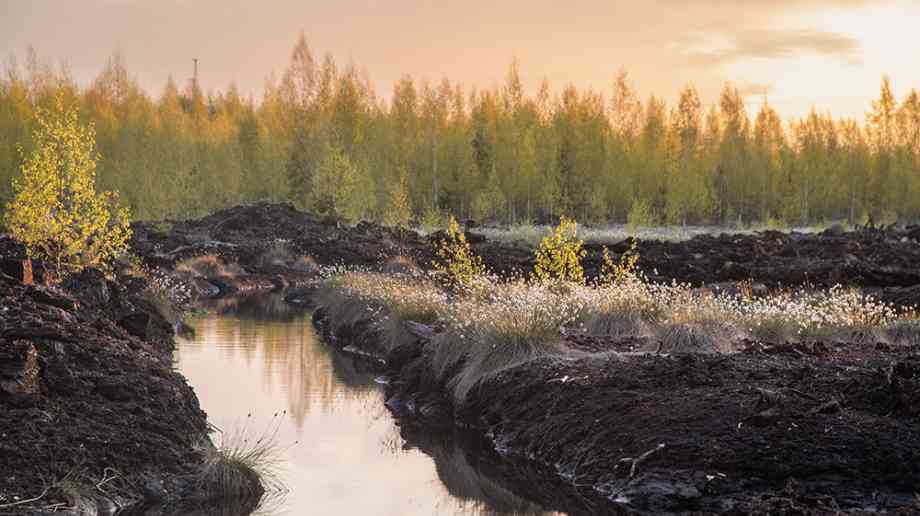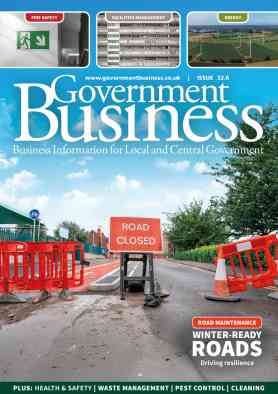
Peatland protection
Restoring our peatlands to carbon sinks is critical for nature and our climate, writes Ailis Watt, peat policy officer, The Wildlife Trusts
Peatlands, moorlands, bogs, wetlands - these fascinatingly wild but often misunderstood habitats have a critical role to play in reversing the interlinked nature and climate crises. Despite covering only 10 per cent of UK land area, they are our largest terrestrial carbon store and lock up more carbon than the forests of the UK, Germany, and France combined.
Peatlands are home to a variety of highly specialised species, including the UK’s very own carnivorous sundew plant, and sponge-like sphagnum mosses which can hold up to twenty times their own weight in water. Peat is formed in waterlogged conditions at an unhurried rate of just 1mm per year. This process is kickstarted when plants – mostly sphagnum moss – are unable to fully decompose due to a lack of oxygen. As a result, the carbon stored within plants is locked away within peat.
Benefits
Healthy peatlands not only deliver benefits for nature and climate; they also deliver vital ecosystem services to the public. By holding back water during storm surges, they protect downstream communities from flooding, while also acting as a source for over 70 per cent of the UK’s drinking water. Healthy peatlands also act as natural filters, improving water quality and reducing the treatment required by water plants.
Under threat
However, 80 per cent of the UK’s peatlands are now classified as degraded and face persistent threats. Peat is still commercially extracted for use in horticultural products such as bagged compost and potted plants, and in the lowlands, peatlands are widely drained for agriculture. Other threats include burning for grouse moor management, a practice which dries out and transforms the landscape to create habitat more suited to grouse. This results in a loss of traditional bog species such as sphagnum mosses, cotton grasses and curlews.
The implications of these practices are devastating. Currently, emissions from degraded peatlands make up four per cent of the UK’s total annual greenhouse gas emissions – humans have transformed peatlands from carbon sinks to carbon emitters. The UK is also one of the most nature-depleted countries in the world, and with the loss of critical habitats such as peatlands, nature declines are exacerbated.
That’s why The Wildlife Trusts are urging the UK Government to: ban the extraction and commercial trade of peat immediately, ban all horticultural uses of peat as soon as parliamentary timeframes allow, or by 2024 at the latest and restore all peatlands damaged by the removal of peat by 2030.
The Wildlife Trusts are working to ensure peatlands play a key role in tackling the nature and climate crises. Across England alone, Trusts have collectively restored over 50,000 hectares of peatland, equivalent to 123,000 football pitches. These activities are putting nature on a path to recovery whilst helping to halt the vast quantities of CO2 that degraded peatlands are emitting into our already warming atmosphere. Here are a few examples of peatland restoration projects across the Trusts.
Peatland Progress – a new vision for Fens
The Wildlife Trust for Bedfordshire, Cambridgeshire & Northamptonshire (BCN) is working on a large-scale transformation of the landscape of the Great Fen. An £8 million Heritage Horizons grant from the National Lottery Heritage Fund has enabled the Trust to purchase a large area of land that, crucially, will result in the connection of the two halves of the Great Fen for the first time since the 1850s. This will create a huge nature recovery network, offering species such as otters and bitterns the space they need to thrive. The Trust will then get to work restoring the highly degraded landscape by investing in water storage to ensure the site remains wet. This will be a significant contribution to reducing carbon emissions as well as safeguarding several hundreds of thousands of tonnes of carbon in the Great Fen peat according to experts at Cranfield University.
Landscape-scale blanket bog restoration in Yorkshire
The blanket bogs of Yorkshire are a globally rare habitat which are home to amazing wildlife and store over 27 million tonnes of carbon. However, as a result of government incentives for agricultural improvement between the 1950s and 80s, these habitats have become heavily degraded, and the landscape is now scarred by drainage channels and erosion. Yorkshire Wildlife Trust is a leading partner in Yorkshire Peat Partnership (YPP), which works to coordinate restoration across the Yorkshire Dales and North York Moors National Parks, and Nidderdale Area of Outstanding Natural Beauty. Here, the Partnership is working to restore the natural hydrology of peatlands and has, so far, blocked over 2,222 kilometres of drains – equivalent to more than twice the length of the UK. In addition to rewetting, YPP has now planted over one and half million plug plants to help bring 41,469 ha of upland peatland into restoration management.
Alternative approaches to farming in the northwest
In the northwest, 98 per cent of lowland peatlands have been destroyed through drainage for extraction, agriculture, and development. The Wildlife Trust for Lancashire, Manchester & North Merseyside is pioneering an altogether new approach to peatland restoration. Situated at Winmarleigh Moss, Lancashire’s best example of a lowland raised bog has now been all but destroyed through drainage and conversion to farmland. So far, the Trust has re-wetted the once-drained farmland and planted over 150,000 plugs of sphagnum moss. In the first year alone, an 86 per cent reduction in carbon emissions has been recorded, and the Trust expects that the carbon farm will become a net carbon sink once a full cover of vegetation is established. In taking this approach, the Trust, working with Manchester Metropolitan University (MMU), demonstrates how soil carbon can be protected while the financial viability of land for farmers and landowners can be maintained. This is a particularly important project given that it is lowland agricultural soils like these which produce the vast majority of the UK’s peatland emissions. The Trust is also pioneering alternative methods of farming at Rindle Moss in Greater Manchester. Here, the Trust is farming crops, but does so on rewetted peat soils – a technique known as ‘paludiculture’.
Restoration of ancient wetland habitats at Cors y Sarnau, North Wales
Once a shallow lake, today Cors y Sarnau is a rare peatland habitat that is of national importance to Wales. Here, visitors can experience first-hand the succession of the land from lake to wet woodland. In the summer months, the site is home to migrating warblers who travel from Africa and southern Europe to nest in the dense scrub. Year round, the site is home to grass snakes, common lizards, and plants such as the carnivorous (insect-eating) sundew. North Wales Wildlife Trust has been able to nearly double the size of its nature reserve and is now working to restore additional habitat by removing vast swathes of non-native conifer plantations. Thanks to funding from Care-Peat – an Interreg North-West Europe project involving 12 partners – in addition to funding from Natural Resources Wales, it is carrying out hydrological repairs and controlling the spread of scrub and invasive non-native species, allowing native wetland species to flourish. Working with MMU, carbon emissions are also being monitored in order to gauge the speed at which the site can be transformed from a carbon source into a carbon sink. The Trust hopes to be able to use this data to advocate for the more sustainable management of peatlands both in Wales and across the UK.
Reversing the decline of UK peatlands is no small undertaking and projects like these demonstrate the importance of working in partnership with local stakeholders. However, without greater Government support, UK peatlands will continue on their trajectory of decline.


